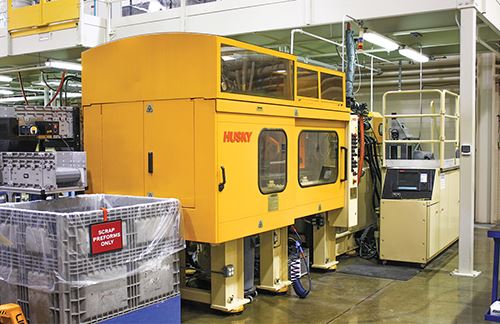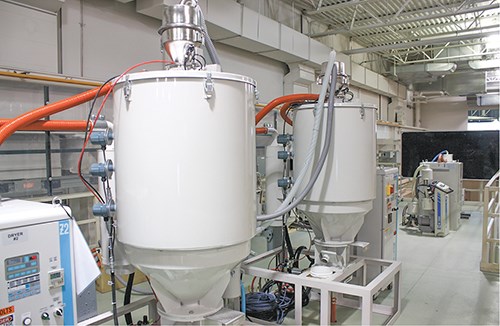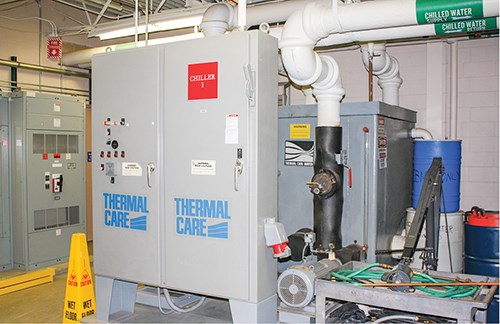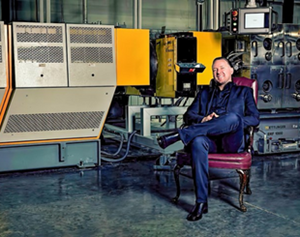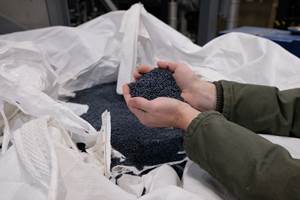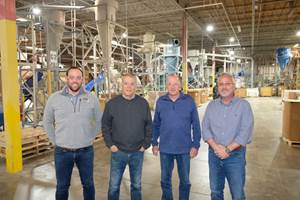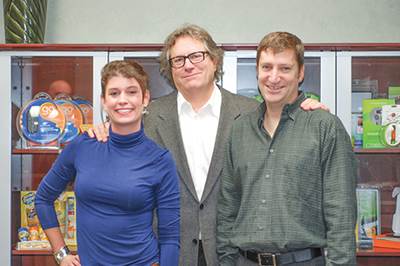Sustainable Injection Molding: Amcor and the Big Picture
How the world’s biggest producer of PET packaging measures the environmental footprint of its operation.
When you’re part of Amcor Ltd., a $12 billion global outfit that bills itself as “the world’s largest packaging company,” you take seriously the responsibility of assessing and managing your environmental footprint. What’s more, you tend to look at yourself as part of a total supply chain with multiple inputs and outputs, all of which can affect the relative sustainability of Amcor itself.
That’s why Charlie Schwarze has to look at the big picture. As the new global manager of sustainability for Amcor Rigid Plastics, he measures the environmental footprint of the world’s biggest producer of PET packaging. Based in Ann Arbor, Mich., it accounts for 26% of Amcor’s total sales and has 65 plants in 13 countries, not counting its 50% stake in Bericap North America, with three facilities, which is part of an $800-million global maker of closures.
“When we look at our carbon emissions, we look across the entire value chain,” Schwarze says. “Roughly 70% of those emissions come from resin manufacturing, and about 25% from our own facilities—representing mainly electrical use in injection and blow molding. Another 5% of the total emissions come from other services like logistics—transporting raw materials to our plants and products to our customers.”
How a plastics processor fits into the larger picture of sustainability was the subject of a Plastics Technology article in January 2012, which included comments from Schwarze’s predecessor, David Clark, who has since moved to a new position. For this article, we asked Schwarze for a narrower focus on what sorts of sustainability programs can be implemented within Amcor’s injection molding operations.
Amcor operates over 150 injection machines in the U.S., molding PET preforms for beverage bottles. In addition, Bericap North America injection molds 15 billion caps and closures a year and reports its sustainability metrics through Amcor’s data-collection system to be included in Amcor’s annual sustainability report.
Schwarze, age 34, comes to Amcor from the U.S. Navy, where he was an F-18 fighter pilot. While that might not seem obviously connected to his current job, he says, “We put a lot of emphasis on safety and fuel savings.” After the Navy, Schwarze studied Environmental Science for a year at the Univ. of Michigan, Ann Arbor, focusing on product life-cycle analysis. He interned last summer at Amcor and took over as sustainability manager in September. He is also continuing his studies toward an MBA.
Schwarze says Amcor’s sustainability activities at the molding plant level are directed primarily at reducing energy consumption, minimizing waste, and utilizing recycled and renewable materials. Also important to Amcor’s concept of sustainability is “the social aspect,” Schwarze notes. Amcor participates in Sedex, the Suppliers Ethical Data Exchange, a nonprofit membership organization “dedicated to driving improvements in ethical and responsible business practices in global supply chains.”. “We share data on such things as minimum wages and workers’ rights,” Schwarze explains. “One of our key values at Amcor is social responsibility and Sedex ensures that we communicate that commitment to our customers.”
SAVING ENERGY AT AMCOR
Energy conservation efforts involve teams from across the Rigid Plastics business unit. Every month or two, team members from each plant get together for a conference call to compare results and share best practices. “These teams are essential to our energy-reduction efforts and are made up of a cross-section of employees at each facility,” Schwarze notes. “This fosters creativity and ensures a mix of top-down and bottom-up projects.”
One of their successes was in replacing plant lighting with more efficient fluorescent fixtures. (Many plastics processors have found this to be a relatively easy first step.)
Another initiative has been modifying startup and shutdown procedures. One goal is to minimize energy waste from machines idling unproductively. Another is to reduce peak load charges by staggering machine startups rather than hitting the “on” switch for all the presses at once.
“We are working diligently to reduce cycle times and increase cavitation in preform molding,” Schwarze notes. “This increases efficiency in a number of ways, including energy use.”
Not every machine at Amcor is yet being monitored for energy usage. But the firm’s newest plant, in Wytheville, Va., is a model for the future. Schwarze says it has a highly integrated SCADA (supervisory control and data acquisition) computer system that tracks energy consumption by every injection and blow molding machine. It also tracks energy usage for the whole plant.
The company has a significant number of all-electric injection machines for its pharmaceutical products and is also introducing hybrid hydraulic/electric presses, but has not yet documented the energy savings vs. conventional hydraulic models.
Auxiliary equipment has also come under scrutiny for energy savings. Air compressors are notorious energy hogs, and getting their electricity consumption under control is important, Schwarze says. Amcor implemented remote computer monitoring of compressor usage to obtain better performance at individual sites. “You can’t manage what you don’t measure,” Schwarze says, repeating the mantra of efficiency experts everywhere. Also, energy teams have fanned out through the plants to listen for the telltale hiss of compressed-air leaks—the sound of money escaping.
Amcor has looked into possibly using outdoor “free cooling” of process water with ambient air in the cooler months. And its energy teams have used infrared scanners on resin dryers to detect wasteful leakage of heat energy.
In the fiscal year ending June 2012, Amcor Rigid Plastics cut energy/kg of resin processed by 5.6%, Schwarze reports. “Overall, throughout our value chain, we reduced carbon emissions in that single year by 2.6%.”
TRIMMING WATER & WASTE
Another main sustainability focus at Amcor, Schwarze notes, has been to control water usage. “We have water-control plans at all facilities, even though we use a relatively small amount of water in our processes. Our systems are basically closed-loop, though we do have some evaporative cooling towers that require some makeup water.” Sustainability programs have cut water use by 4%.
Amcor’s “Smash Trash” program aims to reduce the amount of plant waste sent to landfills. Such waste includes lunch-kitchen scraps, spilled resin pellets, strapping, and pallets. Since 2008, waste sent to landfills has been cut 80%, through recycling, reuse, and improved processes. Schwarze cites the example of one plant that eliminated over 1000 lb of scrap during a color change by working with suppliers and optimizing the process. What Amcor cannot reuse itself is sold to local waste dealers.
RECYCLING & RENEWABLES
Last year, Amcor Rigid Plastics used over 50 million lb of post-consumer recycled (PCR) plastics—mostly PET, but also some HDPE. Most of this is food-grade PCR, though some general-purpose material is used in Amcor’s household-products containers. The total amount of PCR Amcor consumes is only a small part of its resin stream—under 10%. Products that contain PCR generally use it at levels of 10% to 25%, “though we can go to 100%, if the customer asks for it,” Schwarze states. “Some customers ask for PCR, even though it can cost a little more for highest quality recycled material.”
Amcor has been investigating potential use of biobased plastics. One customer is expected to launch soon products packaged in bio-PET containing 30% plant-derived raw materials, though there is a price premium on such resins. “In the future, we do expect a significant ramp-up in use of biobased PET and HDPE,” Schwarze says.
Related Content
A Recycling Plant, Renewed
Reinvention is essential at Capital Polymers, a toll recycler that has completely transformed its operation in a short period of time.
Read MoreNew Facility Refreshes Post-Consumer PP by Washing Out Additives, Contaminants
PureCycle prepares to scale up its novel solvent recycling approach as new facility nears completion.
Read MoreEvolving Opportunities for Ambitious Plastics Recycler
St. Joseph Plastics grew from a simple grinding operation and now pursues growing markets in recycled PP, food-grade recycled materials, and customized post-industrial and post-consumer compounds.
Read MoreCompatibilizers Aid Recycling & Upcycling of Mixed Resins
Compatibilizers are proving their worth in boosting critical properties such as impact/stiffness balance of PCR and PIR blends of polyolefins and other plastics.
Read MoreRead Next
Sustainable Thermoforming: Efforts at Dordan
Family-owned former has been in the forefront of sustainable thermoforming and package design for years. Has it been worth the effort?
Read MoreThe Business Advantage of Sustainability
Companies promote their sustainability commitment in various ways, but beneath the promises and promotional materials should be a true corporate commitment to sustainability goals that provide meaningful environmental, economic, and social benefits.
Read MoreSustainability Will Change Your Business
Do you have a sustainability officer yet? You might need one. It's probably even more likely that your customers have one, and you will have to pay attention to them if you want to continue to supply them with plastic parts or products.
Read More

